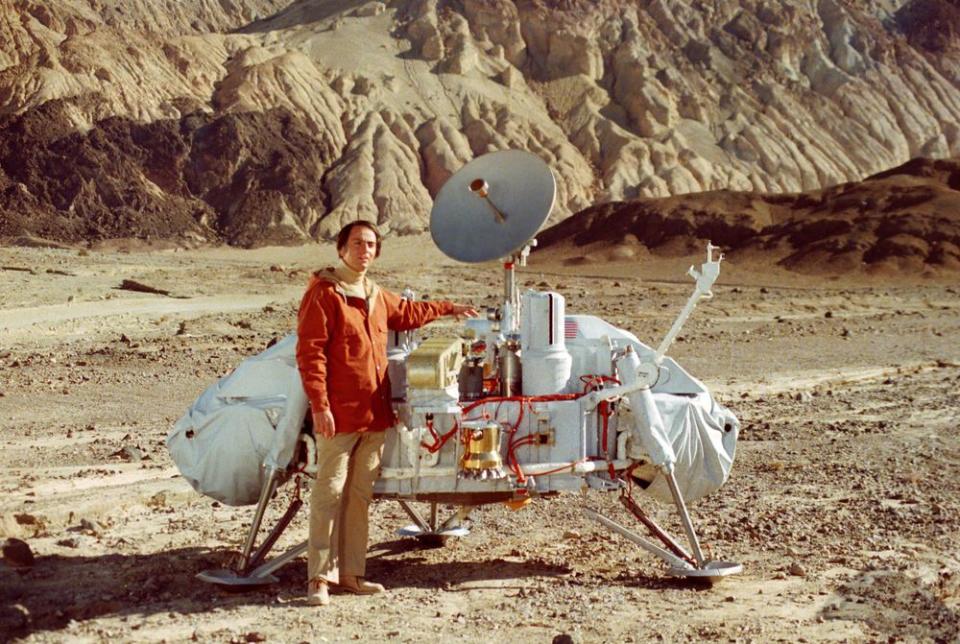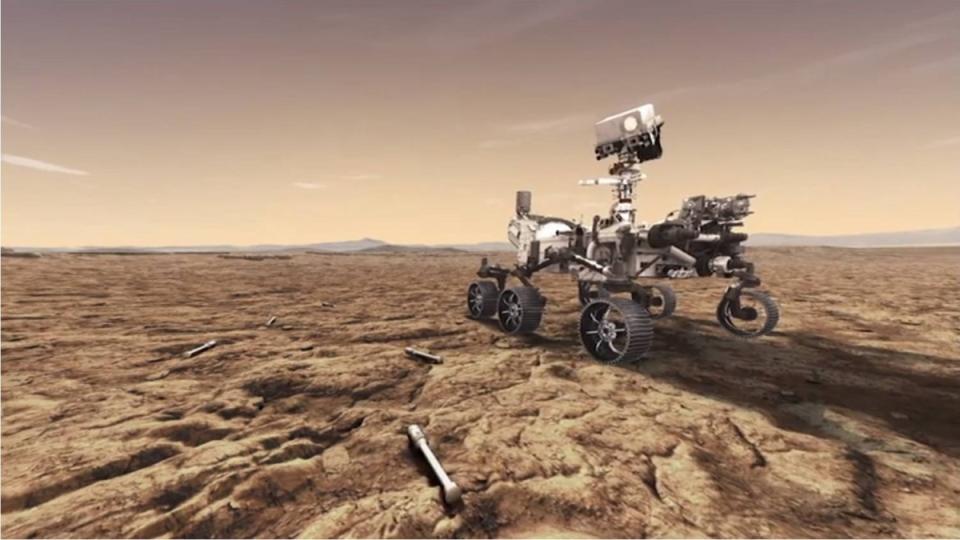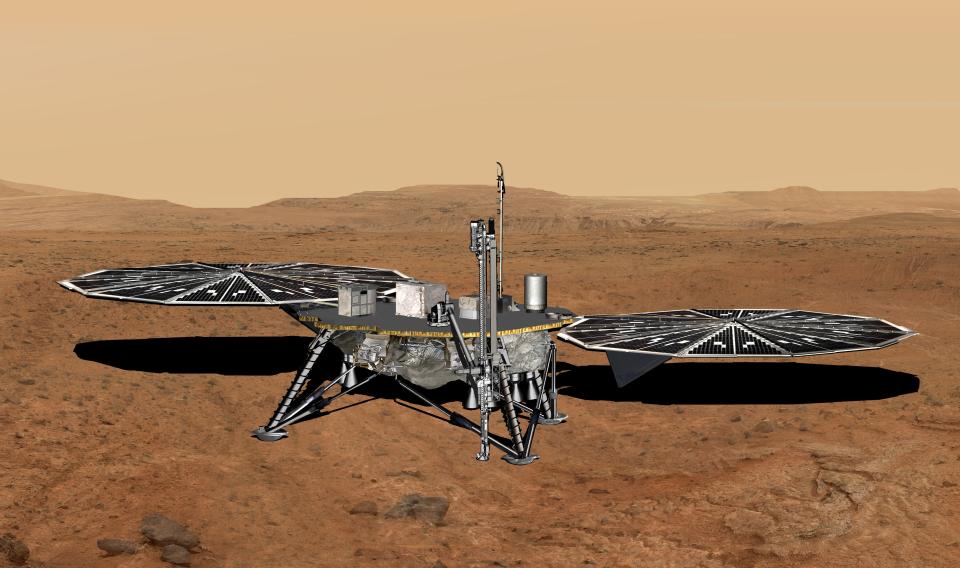As the call to bring bits and pieces of Mars back to Earth for intensive research continues, scientists are also devising instruments and techniques that could be sent to the Red Planet to conduct on-site investigations for life. Can these low-cost approaches overcome the early need for samples shot directly from Mars?
That option is reminiscent of the commentary of Marcel Proust – a French novelist, literary critic and essayist who wrote the novel Looking for lost time: “The real journey of discovery does not consist in looking for new landscapes, but in having new eyes.” For the discovery of past life on Mars, a sample program would work best, but if we want to discover current life on the Red Planet, that is the way to go.
That is the view of Dirk Schulze-Makuch, professor of astrobiology and planetary habitability at the Technical University of Berlin in Germany. Furthermore, he believes that the currently available methodologies are suitable and advanced enough to determine whether there is life on Mars.
“To get unambiguous results, however, we would have to put together a series of different of these methodologies,” Schulze-Makuch told Space.com.
Related: NASA’s troubled Mars sample return mission has scientists seeing red
Puzzling chemical activity
Schulze-Makuch points back in time to the twin NASA Viking lander missions in the 1970s. It was a heady time to answer a provocative question: Is Mars an abode for life?
While biological experiments revealed unexpected and puzzling chemical activity in Martian soil, a majority of Viking Mars researchers tended to find no clear evidence for the presence of living microorganisms in the soil near the landing sites.
Undoubtedly the two Viking landers did respond to the question about life on Mars by answering: Can you repeat the question?
“In principle, the Viking approach was correct,” Schulze-Makuch said. “The problem at that time, almost fifty years ago, was that our methods were not yet that advanced. We did not yet have a good understanding of the Martian environment. We have made great progress in both respects,” said the astrobiologist.

Hard to interpret
Schulze-Makuch said it’s true that the return of Mars samples will allow scientists to apply even more of our most advanced methods, including those not yet available for a space mission.
But because of the long period of time a soil sample is trapped – both on the surface of Mars and during the long distance from Mars to Earth, ‘we would likely find only organic remains of possible life, which would be difficult to interpret. This approach would work well for past life on Mars,” Schulze-Makuch said, “but if our goal is to find existing life, then an in-situ mission is the best choice.”
Viking Results
“There is an inevitable tension in the return of Martian samples and the search for life,” said Chris McKay, a space scientist at NASA’s Ames Research Center in California’s Silicon Valley.
“It’s clearly the case that the best search for life would be done from samples in laboratories on Earth,” McKay told Space.com. ‘But the prospect of bringing back a sample that may contain life on Mars is making many people hesitate and is indeed being regulated, and some would say banned, by the [United Nations] Outer Space Treaty.”
Based on the Viking results, can we assume that there is no life on the surface of Mars?
“My answer to that is yes and no,” McKay responded. The Mars researcher underlines data collected by Viking in 1976, the discovery of perchlorate by the NASA Phoenix lander in 2007, as well as analysis of the still-running Curiosity Mars rover that showed low levels of organic substances since landing in 2012.
“Most Martian scientists argue that the reactivity observed in Martian soil is chemical and that surface biology does not currently exist. So yes,” McKay said. “But no. This opinion is not unanimous,” he said, citing the arguments for existing life on Mars and its possible detection by the Viking-tagged release experiment.


Public opinion
NASA and the Committee on Space Research (COSPAR), an interdisciplinary scientific body, both consider returns of samples from Mars to be a potential biological risk, McKay said.
McKay said he has argued in print that “the standard of evidence to achieve scientific consensus is clearly lower than the standard to be applied to the precautionary protection of the Earth.” Life may not be the scientifically preferred explanation for the [Viking Labeled Release] results, but it cannot yet be ruled out.”
It may well be that public opinion or legal process, McKay said, “will not support the assumption that there is no life on Mars for the purpose of returning samples or astronauts to Earth without further analyzes on Mars, regardless the scientific consensus,” he concluded.
Maturation pipeline
One potential NASA mission that has received support is the Mars Life Explorer (MLE). This deep-digit lander would focus on a search for signs of current life on the Red Planet.
MLE received hearty support from the most recent Planetary Science Decadal Survey, a report from the US National Academies of Sciences, Engineering and Medicine released in April 2022.
The instrument suite at MLE is designed to be “instrument agnostic,” says astrobiologist and MLE’s “science champion,” Amy Williams, assistant professor in the Department of Geological Sciences at the University of Florida in Gainesville.
There are already suites of instruments that could fly with the proposed MLE, or new instruments and technologies currently in the maturation pipeline that could be traded in, Williams told Space.com. “There are very real possibilities for alternative and new instruments to join the mission.”


Life screening
RELATED STORIES:
— Strange subterranean polygons on Mars hint at the Red Planet’s wet past
– Water ice buried on Mars’ equator is more than 2 miles (3.2 kilometers) thick
— ‘Star Trek’ on Mars? Curiosity Rover Spots Starfleet Symbol on Red Planet
In the meantime, research teams are pioneering the SOLID (“Signs Of LIfe Detector”), work carried out by the Spanish Center for Astrobiology. There is also a Microfluidic Life Analyzer, or MILA, developed at NASA’s Jet Propulsion Laboratory.
Or how about building an instrument that can be used during robotic ice mining missions, a high-tech device to search for modern-day life on Mars?
That approach is being taken by Steven Benner, founder of the Foundation for Applied Molecular Evolution and Firebird Biomolecular Sciences LLC.
In fact, the Agnostic Life Finding Association (ALFA) was founded, with both Benner and Jan Špaček, inventor of the Agnostic Life Finder (ALF), as leading members.
“The only way to achieve the goal of ALFA Mars is to conduct a screening of life on Mars before the first humans land there,” according to the association’s website.
Ultimately, it seems that the “whether or not” prediction about life on Mars remains foggy with pockets of uncertainty.
Revisiting Carl Sagan’s famous words that “extraordinary claims require extraordinary evidence,” astrobiologist Schulze-Makuch concludes that “based on our current understanding of Mars, I think the extraordinary claim is that Mars has no life and has never had any life. We have to finally find out!”